Prokaryotes
Introduction, growth mechanisms and its phases.
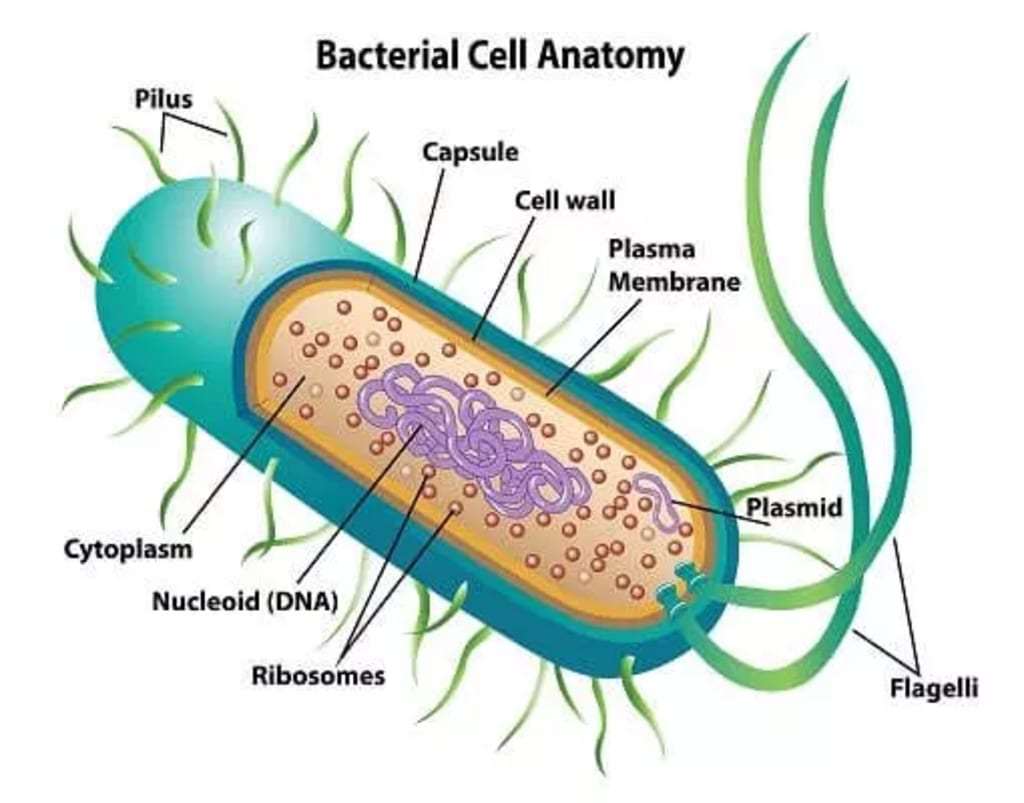
INTRODUCTION
Prokaryotic organisms are unicellular creatures without a nucleus and other membrane-bound organelles. Prokaryotic growth is the increase in the number of cells in these organisms. These organisms, which are renowned for their quick development and flexibility, lack a real nucleus and other membrane-bound organelles. The genetic material contained in their cytoplasm and the external environment that regulate their growth and reproduction. These organisms cannot survive or reproduce without the prokaryotic growth process.
Prokaryotic Growth Mechanisms in the Main Body
There are many different ways for prokaryotic cells to proliferate, including binary fission, budding, fragmentation, etc. The prokaryotic organism's capacity to acquire nutrients, metabolize those nutrients, and duplicate its genetic material are all closely related processes that affect prokaryotic growth. Prokaryotes can adapt to changing environmental circumstances and quickly colonize new areas because to these mechanisms.
Prokaryotes have a variety of growth processes, including:
Binary Fission: The most typical prokaryotic growth process is binary fission. A single cell divides into two exact daughter cells throughout this phase of cell division. The procedure starts with the bacterial chromosome being reproduced, next the replicated chromosomes are separated, and finally the cytoplasm is divided.
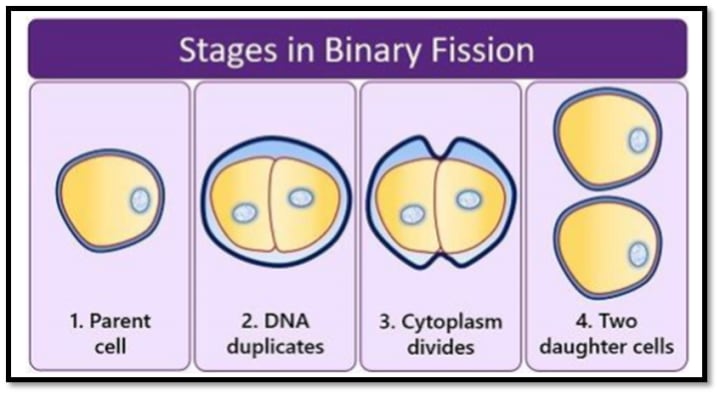
Budding:
Asexual reproduction known as budding occurs when a new cell arises as an outgrowth or bud from the parent cell. A new person is created when the daughter cell develops and eventually splits from the parent cell. Some bacteria, like Caulobacter crescentus, have this mechanism.
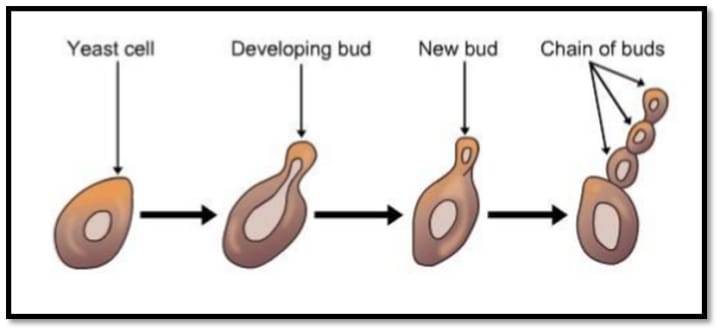
Sporulation
Sporulation is the process through which spores, which enable the bacterium to endure adverse environmental conditions such high temperature, desiccation, and exposure to chemicals, are formed. The spore, which houses the bacterial chromosome and necessary nutrients, is surrounded by a thick, protective cell wall during the process.
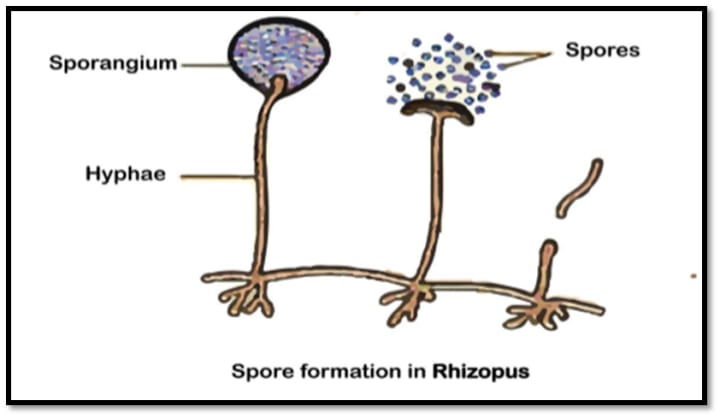
Conjugation
Plasmids or other genetic material are transferred from one cell to another via a pilus or bridge in the process of conjugation, which is a method of genetic exchange between bacteria. Bacteria can develop new features and adjust to shifting surroundings thanks to this process.
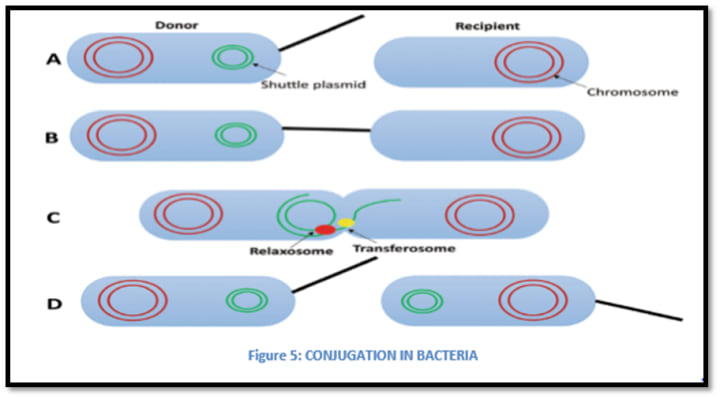
Transformation:
Bacteria can transform by ingesting DNA fragments from their surroundings and integrating them into their own genomes. Through this process, bacteria can pick up new features from other bacteria, such as antibiotic resistance.
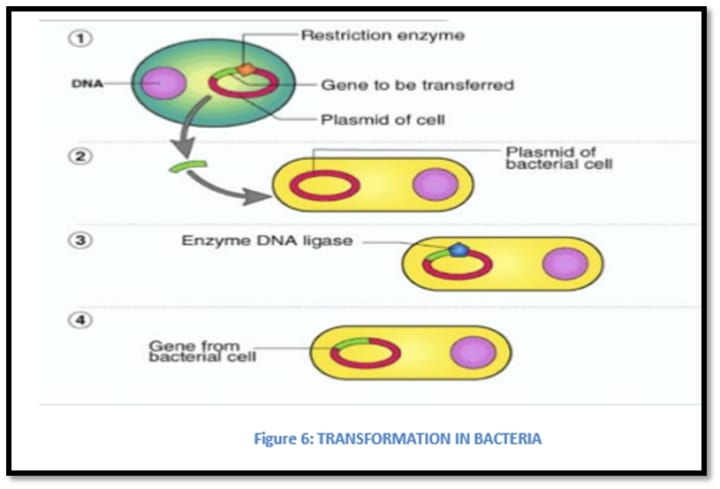
Prokaryotic Growth Phases:
Prokaryotic growth happens in stages, including:
Lag Phase: The bacterial growth cycle's first stage, known as the lag phase, starts when bacteria are introduced to a setting with favourable growth conditions. Bacteria are metabolically active but not actively dividing or multiplying during the lag phase. Instead, they are creating new proteins, adjusting to their new environment, and getting ready to divide their cells.
The kind of bacteria, the size of the original population, and the environmental circumstances all affect how long the lag phase lasts. A lag phase will normally be shorter for bacteria in a nutrient-rich environment than for bacteria in a nutrient-poor environment.
Phase of exponential growth:
The population is expanding exponentially while cells are dividing at their highest rate during this period. A rapid rise in biomass and a doubling of the cell population at regular intervals define this phase.
The exponential phase, often referred to as the log phase, is a time of rapid growth on the bacterial growth curve. In this stage, the population of bacteria expands logarithmically while doubling in size at a steady rate. This is due to the cells' vigorous cell division and DNA and protein synthesis.
Due to the abundance of nutrients available to promote their growth, bacteria are at their healthiest and most metabolically active during the log phase.
Stationary phase:
When the rate of cell growth and the rate of cell death are equal, prokaryotic growth enters the stationary phase, which is marked by a plateau in the proportion of viable cells in a culture. Usually, the exponential phase, in which the cell population is rapidly rising, is followed by this phase.
In the stationary phase, the culture medium's nutrients are exhausted and waste products start to build up, which causes growth to stop. In order to survive in the new environment, the cells in this phase can adjust their metabolism to the changing environmental factors. For instance, they might go inactive or start to make stress response proteins.
Death phase:
The death phase of prokaryotic growth is the last phase of the bacterial growth curve. Due to a lack of nutrition and the buildup of hazardous waste products, the number of viable bacterial cells decreases quickly during this phase.
In the death phase, the number of viable cells decreases overall as a result of cell death outpacing cell division. The particular bacterial species, as well as environmental elements like temperature, pH, and nutrition availability, might affect the exact pace of decrease.
All of the bacterial cells will eventually reach a point where they can no longer support the population and will perish.
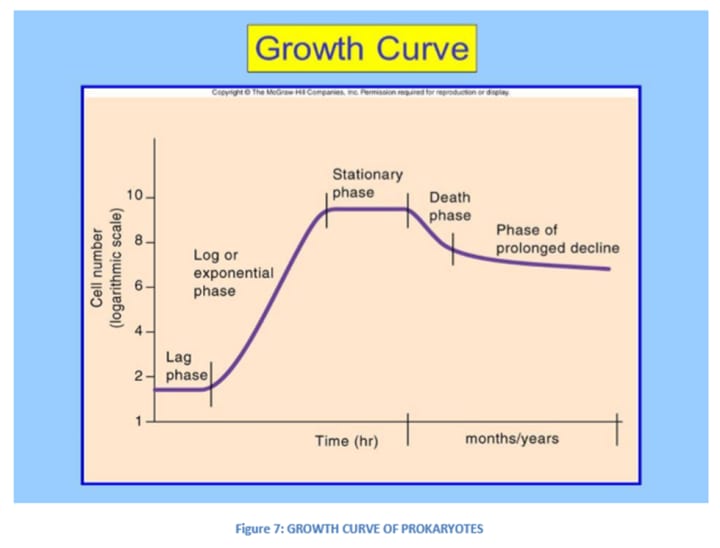
Conclusion
The prokaryotic growth process, in conclusion, is a complicated one that goes through a number of stages, including the lag phase, exponential phase, stationary phase, and death phase. Numerous variables, including the availability of nutrients, the temperature, the pH, and the oxygen concentration, have an impact on the rate of growth and the length of each phase. In disciplines like microbiology, biotechnology, and food science, a thorough understanding of prokaryotic growth mechanisms is essential for better bacterial population control and the creation of infection prevention or treatment strategies. Overall, research into prokaryotic growth continues to be essential for improving our understanding of microbial physiology and the uses of bacteria in a variety of sectors.
About the Creator
Enjoyed the story? Support the Creator.
Subscribe for free to receive all their stories in your feed. You could also pledge your support or give them a one-off tip, letting them know you appreciate their work.





Comments
There are no comments for this story
Be the first to respond and start the conversation.